10 Most Popular Cheeses Originated in Germany

Venture with us on a gastronomic journey as we explore the captivating world of German cheese. Germany, a country renowned for its rich history, picturesque landscapes, and hearty food, is also home to an impressive variety of cheeses that are loved not just locally, but globally.
From the soft, creamy textures of Butterkäse and Cambozola to the fresh, mild delight of Quark, German cheese is as diverse as it is delicious.
This post will introduce you to the top 10 most popular cheeses that originated in this enchanting land. Whether you’re a dedicated cheese connoisseur or a curious foodie, these German cheeses offer a delectable experience that’s sure to elevate your culinary adventures.
The 10 Most Popular German Cheeses (BEST)
| Cheese | Description | Tasting Profile |
|---|---|---|
| Allgäuer Bergkäse | A hard, mountain cheese from the Allgäu region. | Nutty and robust |
| Allgäuer Emmentaler | Also known as Bavarian Swiss, famous for its large holes. | Mild and nutty |
| Altenburger Ziegenkäse | A goat’s milk cheese from Altenburg. | Creamy and tangy |
| Romadur | A pungent cow’s milk cheese. | Strong and savory |
| Hirtenkäse | A firm, aged cheese made from sheep’s milk. | Sharp and rich |
| Bavaria Blu | A classic German blue cheese. | Creamy and mild |
| Harzer | A low-fat, sour milk cheese with a strong aroma. | Tangy and aromatic |
| Butterkäse | A cheese with a buttery flavor and texture. | Smooth and buttery |
| Cambozola | A soft-ripened blue cheese. | Rich and creamy |
| Quark | A fresh, creamy cheese often used in baking and cooking. | Mild and versatile |
1. Allgäuer Bergkäse
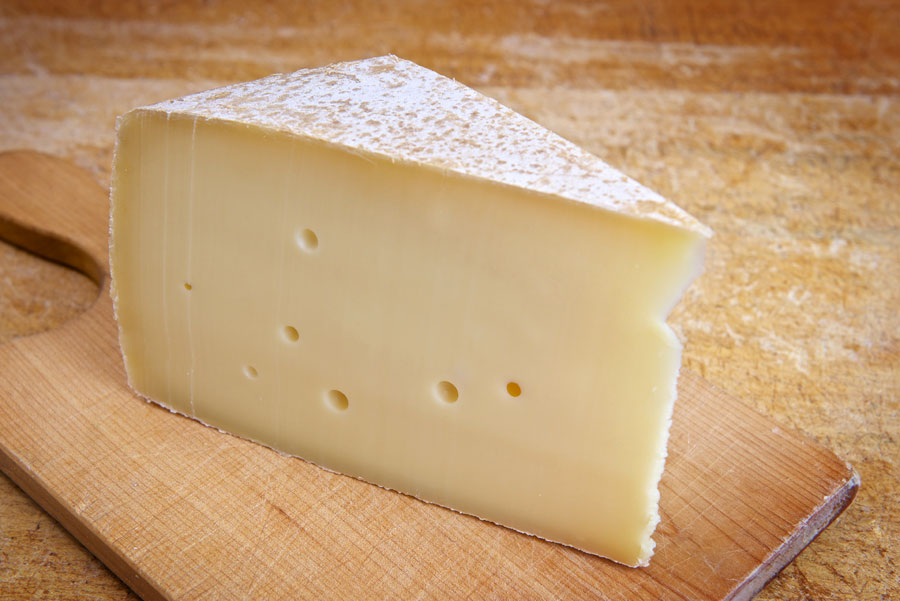
- Milk Type: Cow’s Milk
- Taste: Nutty and robust
- Texture: Hard
- Food Pairing: Bread, fruits, and cold cuts
- Wine Pairing: Full-bodied reds like Merlot
Allgäuer Bergkäse, also known as Bavarian Bergkase, is a distinctive hard mountain cheese hailing from Germany’s Allgäu Alps region. This cheese carries a Protected Designation of Origin (PDO) status, underscoring its unique regional characteristics and production methods. Made from raw, untreated, silage-free cow’s milk from local dairies, this cheese is frequently referred to as ‘Emmentaler’s baby’.
The production of this cheese is steeped in tradition, offering a taste that is both robust and nutty. It’s not just a cheese, but a reflection of the rich cultural landscape of the Allgäu region. From being a staple on cheese boards to being savored on its own, Allgäuer Bergkäse offers a delightful culinary experience for cheese lovers.
2. Allgäuer Emmentaler

- Milk Type: Cow’s Milk
- Taste: Mild and nutty
- Texture: Semi-hard with large holes
- Food Pairing: Sandwiches, salads, and fondue
- Wine Pairing: Light-bodied white wines like Riesling
- Read in-depth guide
Allgäuer Emmentaler is a German twist on the classic Swiss Emmentaler cheese. This hard cheese, crafted from raw, unpasteurized cow’s milk, carries the unique flavors of the Allgäu Alps from where it originates. Known for its distinctive large holes, Allgäuer Emmentaler is a testament to the traditional cheesemaking techniques of the region. Its flavor profile is mild yet nutty, offering a delightful gastronomic experience.
Available year-round, this cheese is a versatile culinary component that pairs well with both robust red wines and light-bodied whites. With a golden-yellow, smooth rind and a slightly tangy taste, Allgäuer Emmentaler invites you on a sensory journey through the German Alps.
3. Altenburger Ziegenkäse
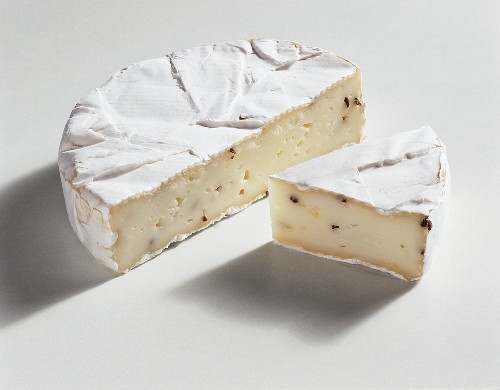
- Milk Type: Goat’s Milk
- Taste: Creamy and tangy
- Texture: Soft to semi-hard
- Food Pairing: Crackers, honey, and fresh fruits
- Wine Pairing: Fruity white wines like Gewürztraminer
Altenburger Ziegenkäse, a renowned cheese from the borderlands of Thuringia and Saxony in Germany, is a beautiful blend of tradition and flavor. This soft cheese, contrary to what the name suggests, is not entirely made from goat’s milk but is a delightful combination of 85% cow’s milk and at least 15% goat’s milk.
The cheese is further enhanced with a hint of cumin, giving it a unique taste that ranges from mild to robust. Its production process, which has been followed since 1897, showcases the deep-rooted cheese-making traditions of the Altenburger Land region. The result is a delicacy that offers a taste of German culinary heritage with every bite.
4. Romadur
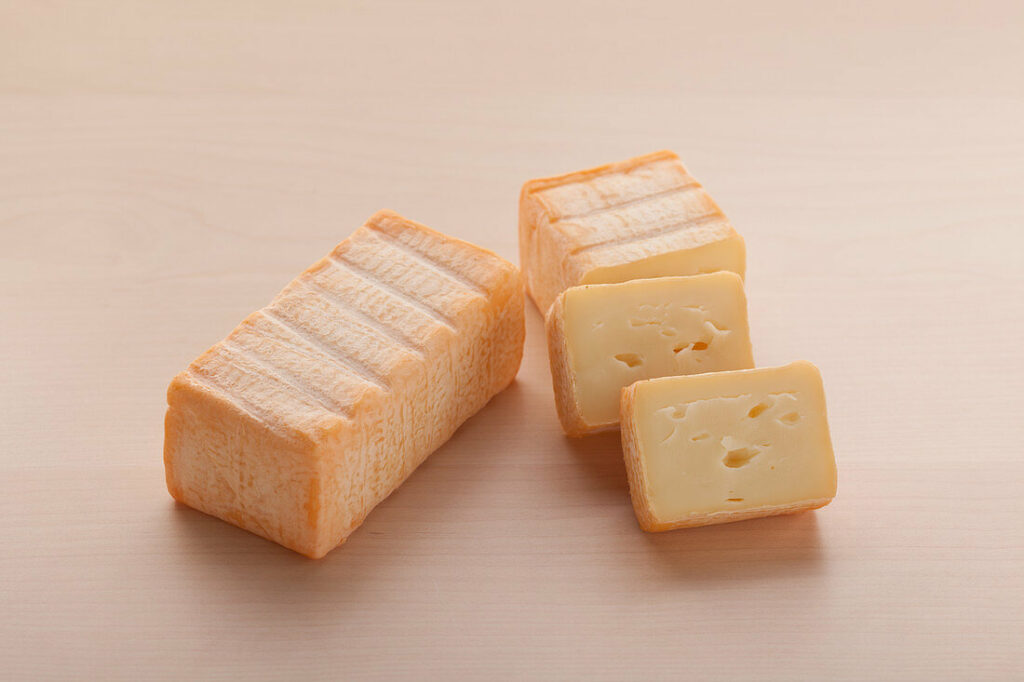
- Milk Type: Cow’s Milk
- Taste: Strong and savory
- Texture: Soft and creamy
- Food Pairing: Rye bread and pickles
- Wine Pairing: Robust reds like Cabernet Sauvignon
Romadur is a soft and intriguing cheese with a rich history. Despite its current association with Germany, particularly Bavaria, it’s believed to have roots in Belgium where it was brought to Germany in the 1830s. Romadur shares a close kinship with Limburger cheese but presents its own unique characteristics. It has a softer texture and a milder flavor compared to its relative.
Made from unpasteurized milk, Romadur offers a robust taste experience despite its lower fat content. Its size is typically smaller than other cheeses, making it a perfect addition to a diverse cheese platter. Whether you’re on a low-fat diet or simply exploring the world of cheese, Romadur provides a delightful and powerful cheese enjoyment.
5. Hirtenkäse

- Milk Type: Sheep’s Milk
- Taste: Sharp and rich
- Texture: Firm
- Food Pairing: Olives, figs, and dark chocolate
- Wine Pairing: Full-bodied reds like Shiraz
Hirtenkäse, which translates to “herder’s cheese,” is a unique and flavorful cow’s milk cheese hailing from the Allgäu region of Southern Germany. This hard mountain cheese is known for its distinct aromas of orange peel and butterscotch, making it a standout in any cheese selection. Produced during the summer months in the Allgäu Mountains, Hirtenkäse showcases the quality of milk from cows grazing on the lush Alpine pastures.
The cheese owes its rich, robust flavor to this high-quality milk and the traditional cheesemaking techniques passed down through generations. With its waxy texture and distinctive taste, Hirtenkäse offers a delightful taste of Germany’s culinary heritage.
6. Bavaria Blu
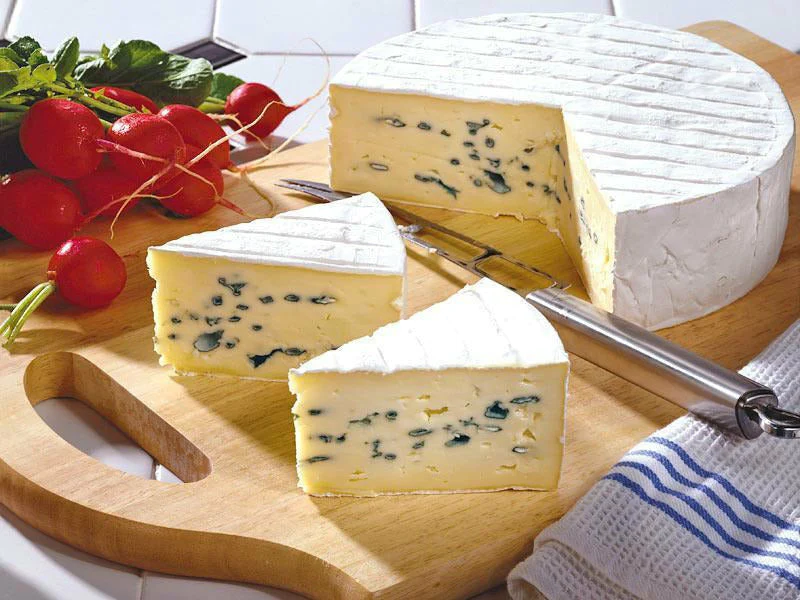
- Milk Type: Cow’s Milk
- Taste: Creamy and mild
- Texture: Soft with blue veins
- Food Pairing: Grapes, pears, and crusty bread
- Wine Pairing: Sweet dessert wines like Moscato or Port
Bavaria Blu is a captivating blue mold cheese that hails from the picturesque Bavarian Alps. Introduced to the market by Bergader in 1972, it’s been winning over cheese connoisseurs ever since. Handcrafted from the highest quality pasteurized cow’s milk, Bavaria Blu offers a unique blend of creamy texture and robust flavor.
The cheese is injected with Penicillium roqueforti during its maturation period, leading to the development of its distinctive blue veins. As a testament to its quality, the cheese is lactose and gluten-free. Whether crumbled over salads or enjoyed as an appetizer, Bavaria Blu delivers a delightful gustatory experience that reflects the unspoiled nature and rugged beauty of its origin.
7. Harzer
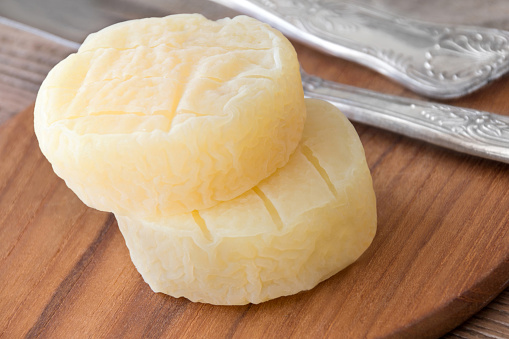
- Milk Type: Cow’s Milk
- Taste: Tangy and aromatic
- Texture: Semi-soft to hard
- Food Pairing: Dark rye bread, onions, and caraway seeds
- Wine Pairing: Dry white wines like Sauvignon Blanc
Harzer is a fascinating cheese that originates from the Harz mountain region in Germany. Known as a sour milk cheese, it’s crafted from low-fat curd cheese, making it a popular choice among health-conscious and fitness-oriented individuals.
Harzer cheese is recognized for its semi-hard texture and distinctive flavor profile, which can be enjoyed on a slice of hearty German rye or paired with a glass of traditional German beer. Despite its high protein content and low-fat characteristics, Harzer remains an affordable delight, offering a rich taste experience that speaks volumes about German culinary tradition.
8. Butterkäse
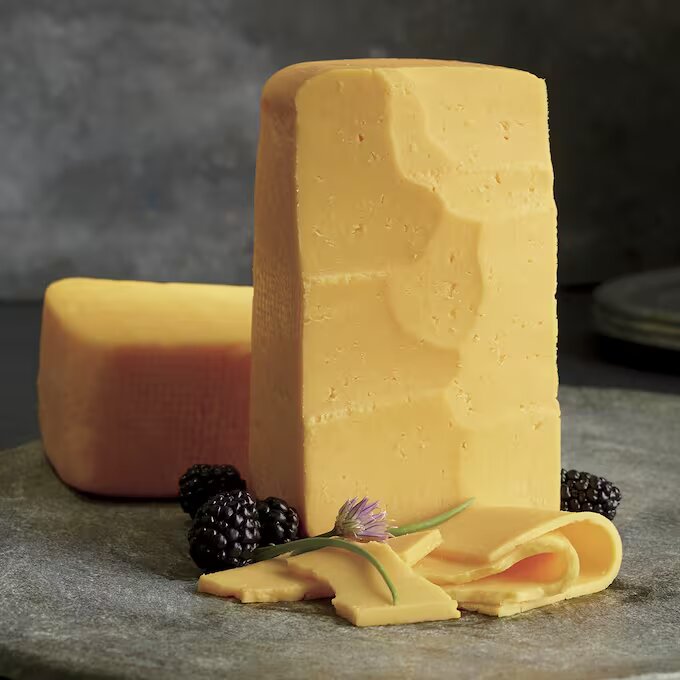
- Milk Type: Cow’s Milk
- Taste: Smooth and buttery
- Texture: Semi-soft
- Food Pairing: Apples, pears, and fresh bread
- Wine Pairing: Light-bodied reds like Pinot Noir or fruity whites like Chardonnay
Butterkäse is an exquisite semi-soft cheese, a hidden gem from the dairy farms of Wisconsin. Known as “butter cheese” in German, this delightfully creamy cheese lives up to its name with a buttery texture and a pleasantly mild flavor that melts in your mouth. It boasts a golden rind and a fat content of around 50%, making it a decadent treat for cheese lovers.
While it’s moderately popular in Germanic Europe, it’s also making its mark in other parts of the world. Whether you’re snacking, cooking, or exploring new cheese pairings, Butterkäse offers an approachable and versatile taste experience.
9. Cambozola

- Milk Type: Cow’s Milk
- Taste: Rich and creamy
- Texture: Soft-ripened with blue mold
- Food Pairing: Fresh fruits, honey, and crusty bread
- Wine Pairing: Dessert wines like Sauternes or full-bodied reds like Merlot
- Read in-depth guide
Cambozola is a delightful fusion of flavor and style, borrowing from the creaminess of French Camembert and the sharp tang of Italian Gorgonzola. This cow’s milk cheese is a product of Bavaria and has been a culinary staple since the early 1900s.
Known for its soft-ripened triple cream texture, Cambozola boasts a rich, creamy taste that’s beautifully offset by the piquant notes of blue vein running through it. Whether served on a cheese platter or paired with a glass of your favorite wine, Cambozola offers a mouthwatering experience that seamlessly blends two classic cheese styles into one.
10. Quark

- Milk Type: Cow’s Milk
- Taste: Mild and versatile
- Texture: Creamy and smooth
- Food Pairing: Baked goods, fresh fruits, and granola
- Wine Pairing: Light white wines like Riesling or sparkling wines like Prosecco
- Read in-depth guide
Quark is a unique dairy delight that hails from the heartlands of Europe. This cheese is fresh, unaged, and has a consistency similar to that of Greek yogurt or cottage cheese. Quark’s taste profile is mild and creamy, making it a versatile addition to both sweet and savory dishes.
It’s rich in protein and low in fat, making it a healthy choice for those watching their diet. Whether spread on a bagel, whisked into a cheesecake or used as a base for dips, Quark brings a light and refreshing touch to a variety of culinary creations.
Final Thoughts
As we wrap up our culinary expedition, it’s clear that German cheese is a fascinating world of contrasting flavors and textures, each variety with its own unique story. From the creamy and versatile Quark to the rich, soft-ripened Cambozola, there’s a German cheese to suit every preference and occasion.
Whether you’re a seasoned cheese lover or a curious food enthusiast, we hope this exploration of Germany’s top 10 cheeses has inspired you to try something new and expand your gastronomic horizons. So, next time you’re at the grocery store or your local deli, don’t hesitate to reach for a slice of authentic German cheese – it’s sure to be a delightful experience!
Also read:





